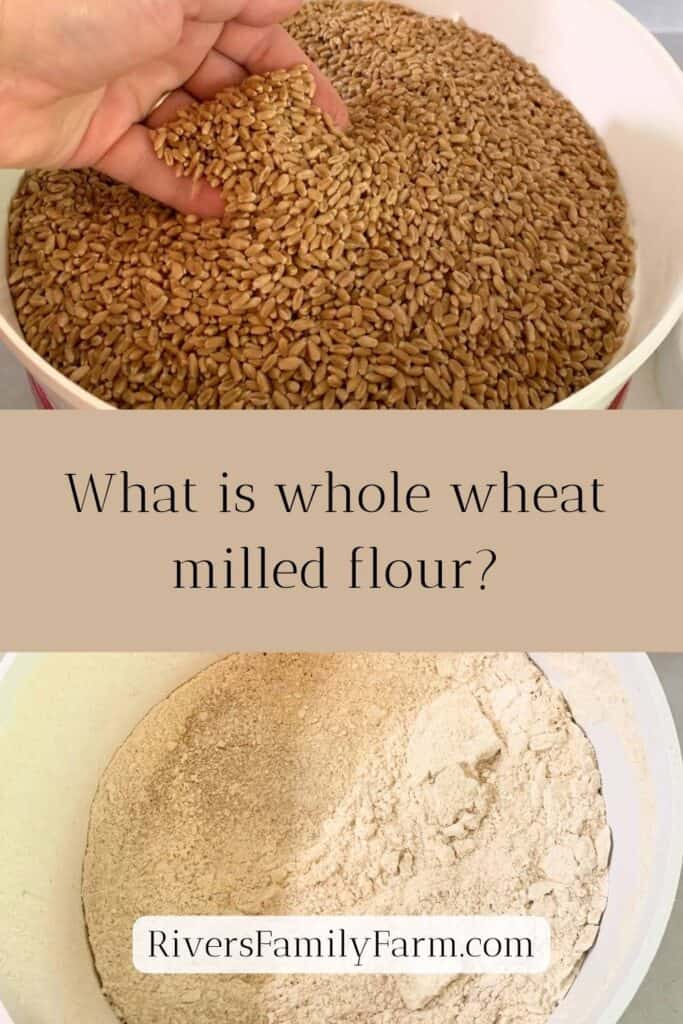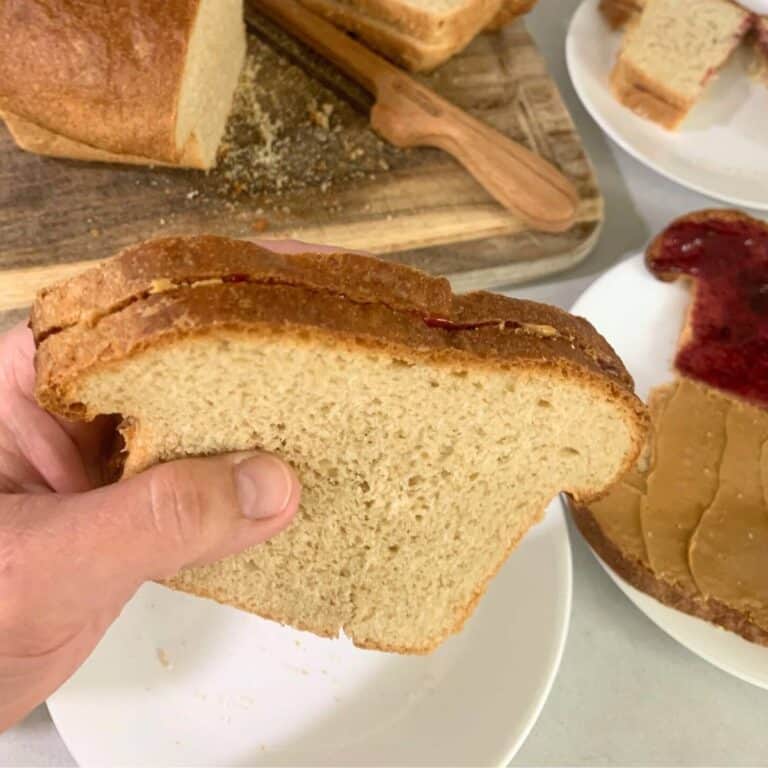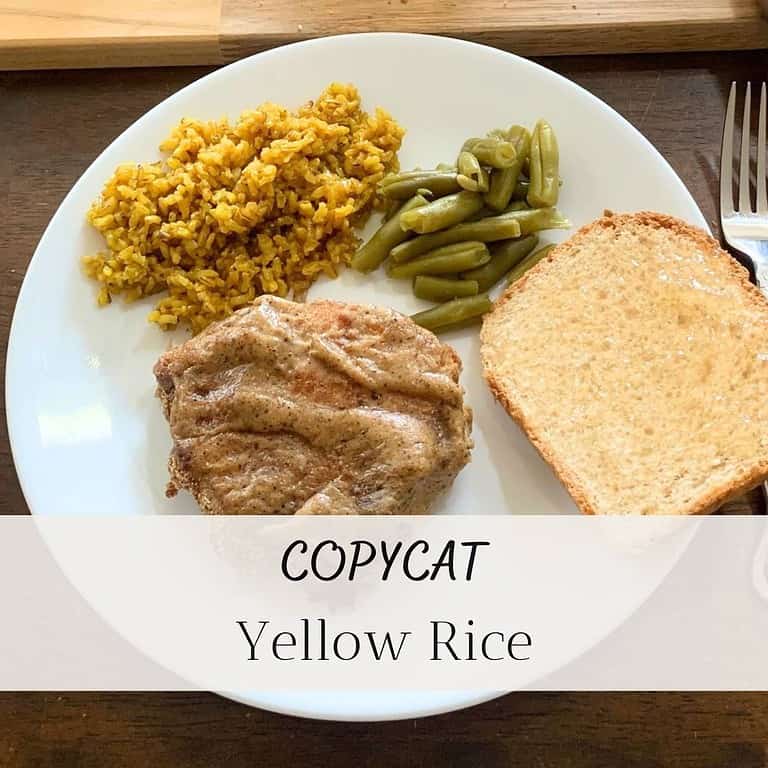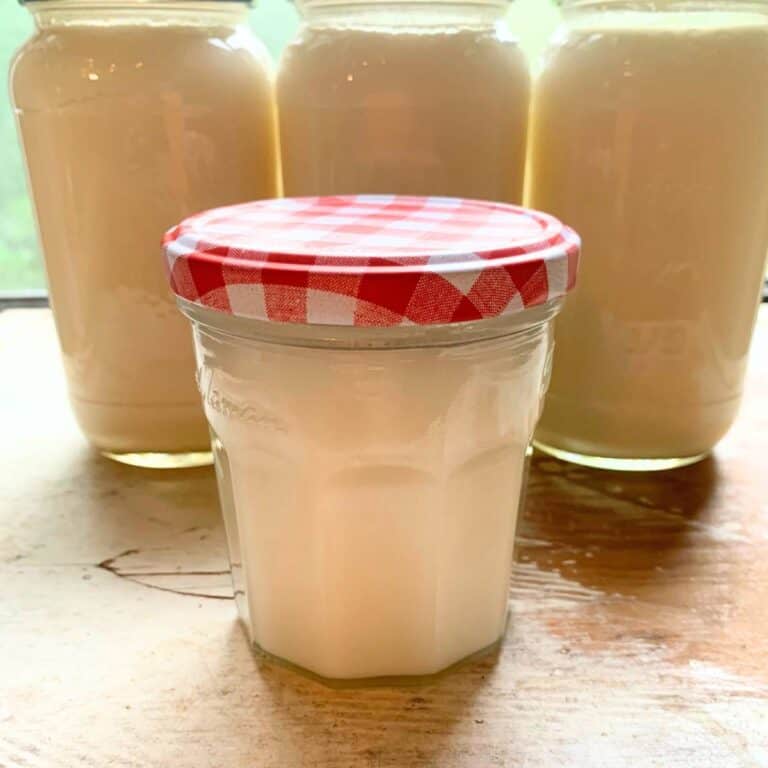Things to Know About Freshly Milled whole wheat flour
Are you scratching your head and wondering what whole wheat milled flour is? Is it the same as all purpose flour or not? Where can you buy it? How can you make it at home? I answer all these questions and more!
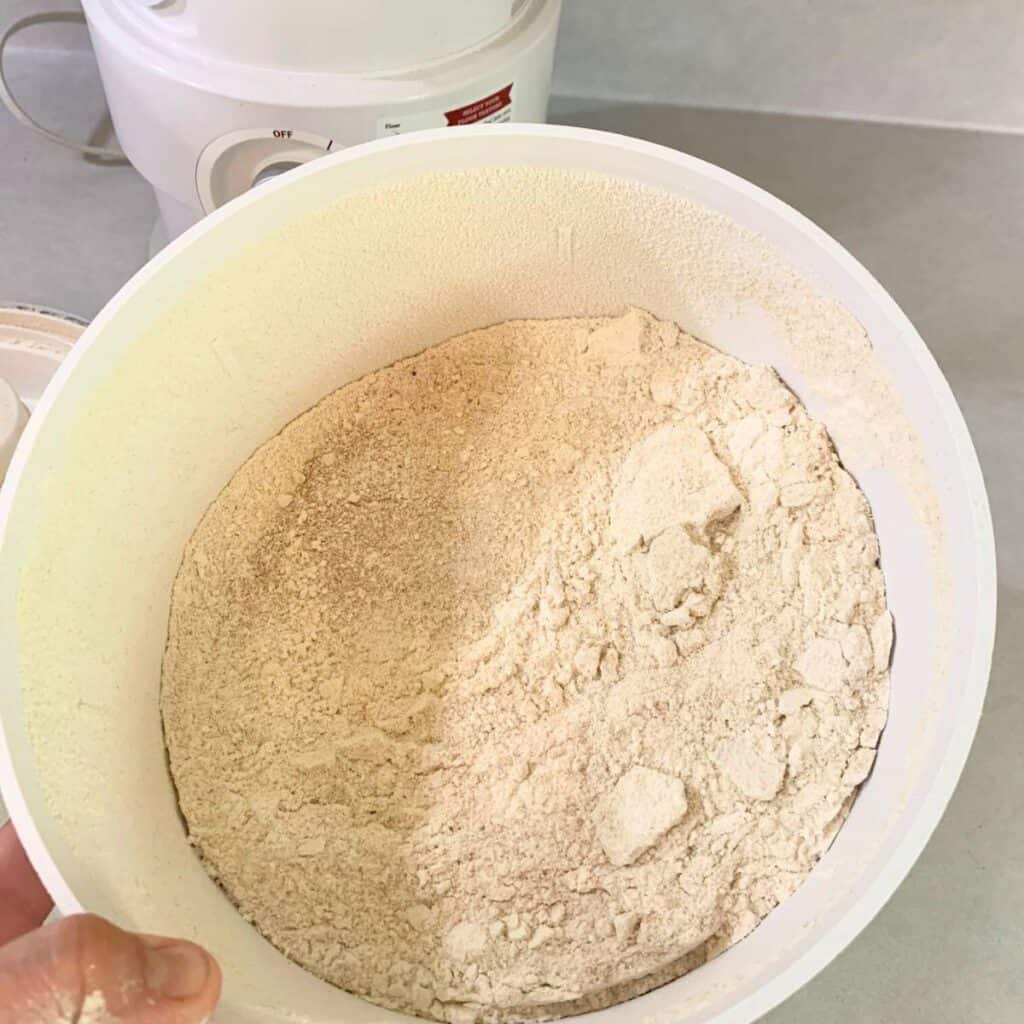
First, let’s talk about whole wheat.
What is whole wheat?
Whole wheat comes from a grain called a wheat berry, which grows on tall, slender stalks. Ever heard references to amber waves of grain or listened to the song “America the Beautiful”? The grain referenced in the song refers to wheat because of its golden brown color.
There are many types of whole grains, one of which is wheat. And there are also many different types of wheat. But mostly you’ll just be choosing between soft or hard wheat, and red or white wheat.
Hard red wheat is a popular choice for nutty, flavorful breads. Soft white wheat is a popular choice for fluffy, light-colored pastries.
However, most of the time you can use the wheat berries interchangeably and you won’t be able to notice a big difference.
What is whole wheat milled flour?
Whole wheat milled flour is when you use a grain mill to grind up a wheat berry into flour. The “whole” in whole wheat refers to the fact that you keep the entire contents of the wheat berry inside the flour and don’t remove the bran, germ, or anything else through sifting afterwards.
Hard red wheat berries make flour that is considered “classic” whole wheat. If you’re looking for a darker, nuttier flavor of homemade bread, hard red wheat berries are the way to go.
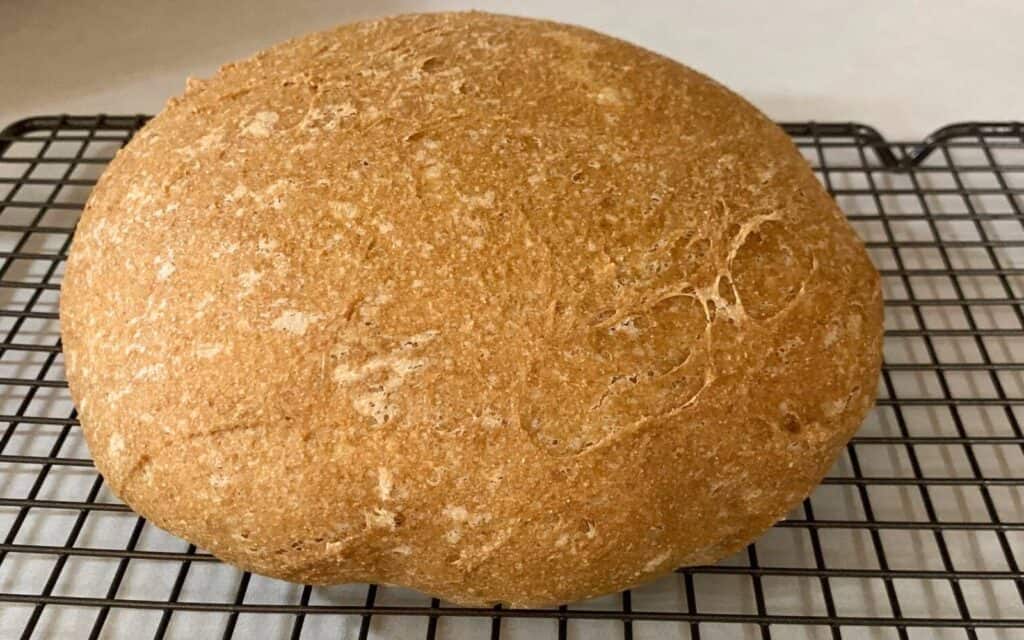
Where can you buy freshly milled whole wheat flour?
You can buy freshly milled whole wheat flour from some specialty bakeries and retailers and at some grist mills.
The whole wheat flour you see for sale at your local grocery store is not freshly milled.
Whole wheat flour includes the endosperm, germ, and bran. When you grind up wheat berries to make flour, the natural oils are released and exposed to oxygen for the first time.
These volatile oils will turn your flour rancid if you don’t use it within a short period of time or freeze it. So it’s best to use freshly milled flour when you make it, or store it in a refrigerator (in the short term) or freezer (for long term storage) to keep it from spoiling.
On the other hand, whole wheat berries can be kept almost indefinitely if you store them properly. Archaeologists have even discovered wheat berries buried in tombs for thousands of years, and even those old wheat berries were successfully sprouted and grew!
I like to keep my grains in 5-gallon food grade buckets, but you can also vacuum seal your grains in glass jars or mylar bags.
What is the purpose of milling flour?
Milling wheat berries into freshly milled flour is more nutritious and flavorful, but it’s also cheaper! Additionally, you have even more options for flour such as organic grains, ancient grains, gluten-free grains, sprouted grains, and more!
Freshly milled flour has more nutrition.
Flour that has been sitting on a store shelf for months is almost completely devoid of nutrition although you still get all of the calories.
Using freshly milled flour is a traditional “alive” food with all of the vitamins and nutrients it’s supposed to have.
Freshly milled flour has more flavor.
Homemade bread using freshly milled flour has a deep and robust flavor. My homemade bread just uses flour, water, a bit of salt, and some yeast. However, the red wheat berries bring a nutty, delicious flavor to the bread.
In contrast, commercial flour lacks flavor. It’s the natural components of wheat that gives it flavor, but industrialized flour removes those natural components because it’s also what makes flour turn rancid if it’s not kept frozen or refrigerated.
For culinary purposes, usually the freshest ingredients taste the best. Dried herbs don’t come close to the flavor of using fresh herbs. The same is true for wheat and other cereals and grains.
You can stock up on grains and they will last for years.
Whole grains can be easily stored for many years if not decades. If you like the idea of having food security, it’s a good idea to stock up on bulk wheat berries or other grains when you can find a good deal on them and can afford them.
The same cannot be said about the flour you buy at the grocery store. Since that grain has already been ground into flour, it has a very short shelf life.
It’s cheaper to buy whole grains in bulk than flour.
You can save a lot of cash by buying whole grains at a bulk, discounted price. Azure Standard is a great place to buy wheat berries in bulk and other grains at a discount price.
The cost comes in later when you store and process the grains yourself. But if you have a limited grocery budget, buying in bulk saves a lot of money over time.
You can find exotic and hard-to-find whole grains that are not available in stores.
Milling your own flour opens doors to a wide world of different flours such as different varieties of wheat (white or red, spring or winter, hard or soft, etc). You can also choose to buy organic grains, gluten-free grains, or ancient grains to mill your own flour.
Other than using wheat berries to mill wheat flour, you can mill flour using oat groats, spelt, or rice. You can also mill almonds, einkorn, amaranth, corn, barley, and emmer. Then there are grains like millet, farro, quinoa, and rye.
Another wheat option is kamut, which is also called Khorasan wheat, Camel’s tooth, and King Tut’s wheat. It is a relative of modern wheat but has 30% more protein and a rich, buttery flavor!
If you have celiac disease and can only consume gluten-free baked goods, grain sorghum (sometimes called Milo sorghum) is safe for you. It’s grown in the dry-land Sorghum Belt in the United States, which runs from South Dakota to South Texas. Buckwheat is also naturally gluten-free and can be milled into flour for breads and other baked goods.
If you want even more options, you can also sprout any of the soft grains to make sprouted flour!
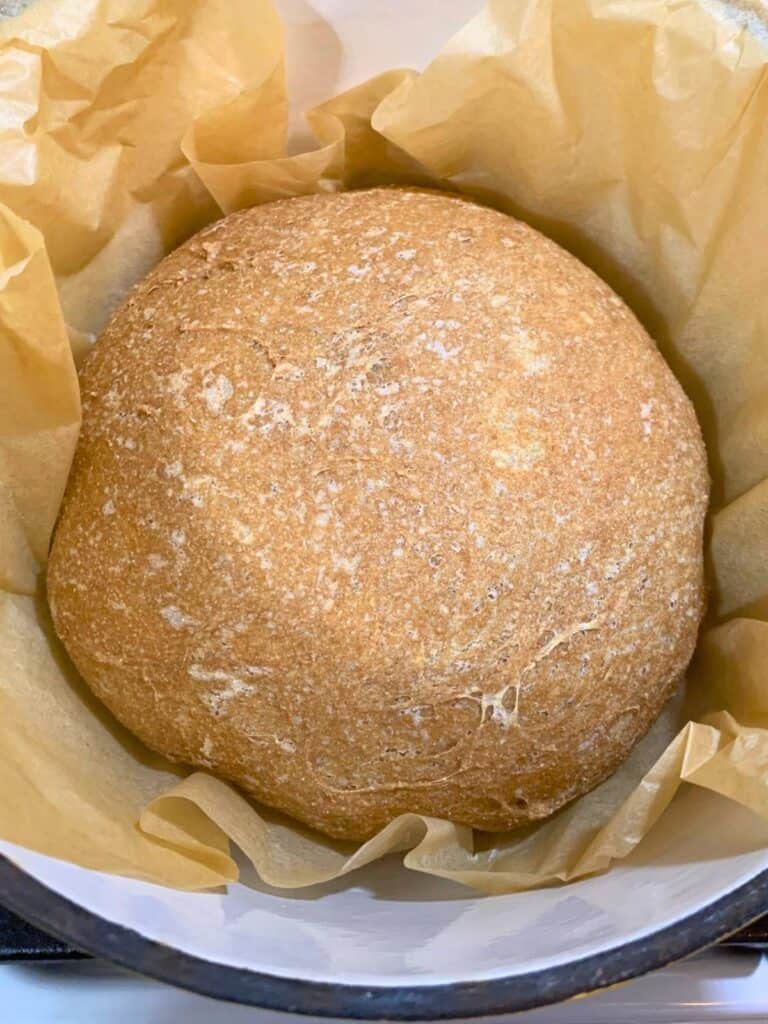
This post contains affiliate links, which means I make a small commission at no cost to you if you place a qualifying purchase through any of the links. Read my full disclosure here. Thanks for your support!
Is milled flour the same as all purpose?
Milled flour is not the same as all purpose flour. Milled flour includes all parts of the grain like the endosperm, bran, and germ. All purpose flour includes only the endosperm.
Commercial flour is made to be cheap and shelf-stable. Companies have to remove most of the nutrition from the flour that makes it go rancid, and then treat the flour with chemicals to preserve it for a long shelf life.
The NutriMill classic grain mill comes in handy if you’re going to buy whole grains and grind those grains into fine flour. It comes with a higher price tag, though.
I’ve had my NutriMill grain mill for years and it’s capable of grinding hard wheat berries, hard popcorn kernels (into cornmeal), oats, and other cereals and grains. They have an amazing customer service department if anything goes wrong with your mill, but I’ve personally never needed them.
There are also other grain mills available, too. You can get a hand-crank manual grain mill for a much cheaper price. But just be aware that it’s not going to produce a fine or super-fine powdery flour. You can still absolutely use it to make delicious breads, though.
How do you convert freshly milled flour to all purpose flour?
You can convert freshly milled flour to an all-purpose flour using a fine mesh sieve, and sifting out all or most of the bran and germ.
To turn your fresh, whole wheat flour into all-purpose flour, you have to sift it after you grind it. Just keep in mind that it is healthy and nutritious to use whole wheat flour. But I can relate if you sometimes want a lighter bread flour for light and fluffy pastries.
Most flour companies use a mixture of hard wheat and soft wheat to create their all purpose flour. I will also mix together hard white wheat or hard red wheat with soft white wheat to create my own mix of all purpose flour. I want to encourage you to mix the wheat berries to create your own custom all purpose flour, too!
Tools you may need
A NutriMill grain mill makes quick work of turning wheat berries into whole wheat flour, and it’s something I regularly use in my kitchen.
If you plan on using a lot of all purpose flour at once, you can invest in a Bosch Universal Plus mixer or NutriMill Artiste mixer and get the flour sifter attachment that works on both models.
Alternatively, you can use a flour sieve to get fine flour.
Instructions to turn freshly milled flour into all purpose flour.
First, use a grain mill to grind your grain into flour.
You’ll want to check your grains as you pour them into your grain mill, because sometimes small rocks or other debris can end up in your grains package. Even though that’s rare, it could damage your grain mill, so you will want to pay attention as you add your grains.
In this example, I’ll grind wheat berries into wheat flour using my NutriMill grain mill. Then I will turn the whole wheat flour into an all purpose flour.
So first, put your grains into your grain mill.

High speed electric grain mills have a setting where you can choose to mill a fine flour or a coarse flour, which would be more for making hot cereals.
I always try to go for the finest flour I can get when grinding wheat berries.
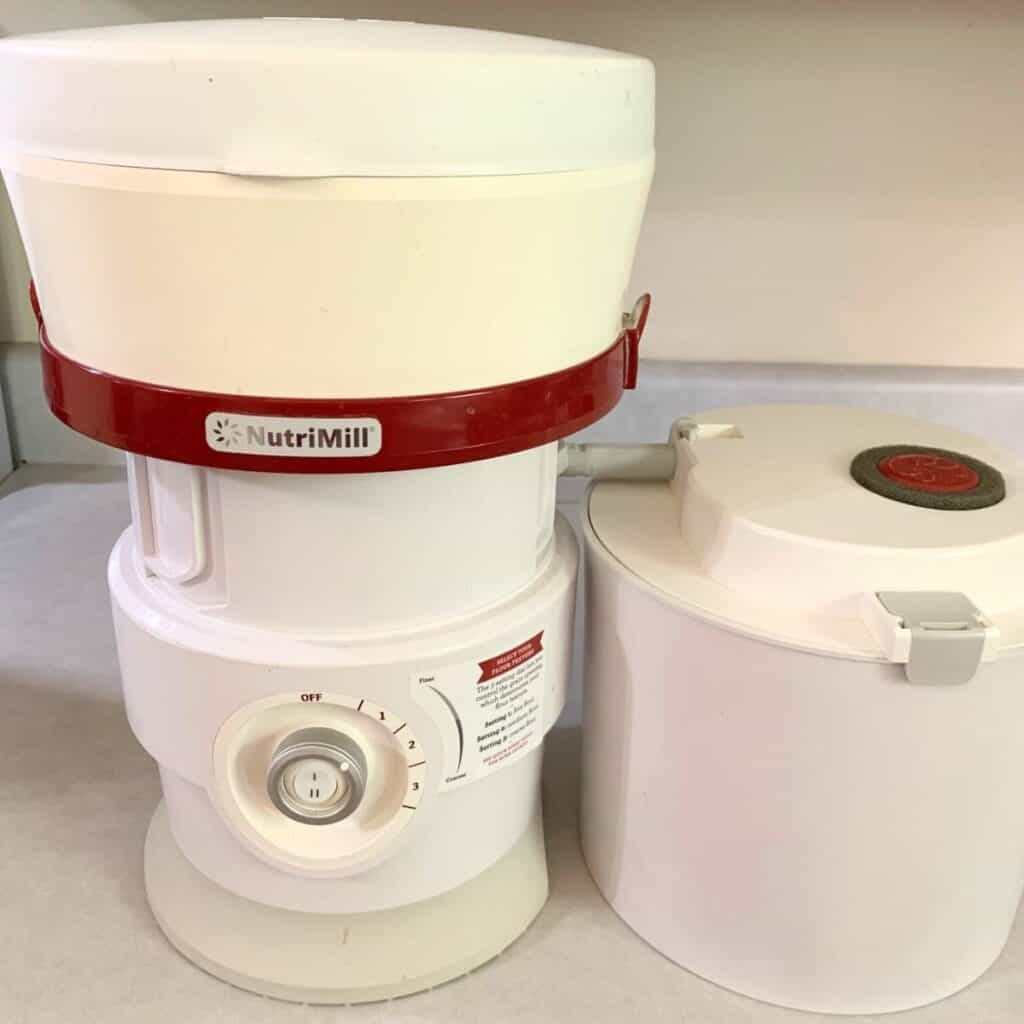
Once you have your grains ground into flour, shake or stir the flour through a fine mesh sieve one or two cups at a time depending on the size of your sieve.
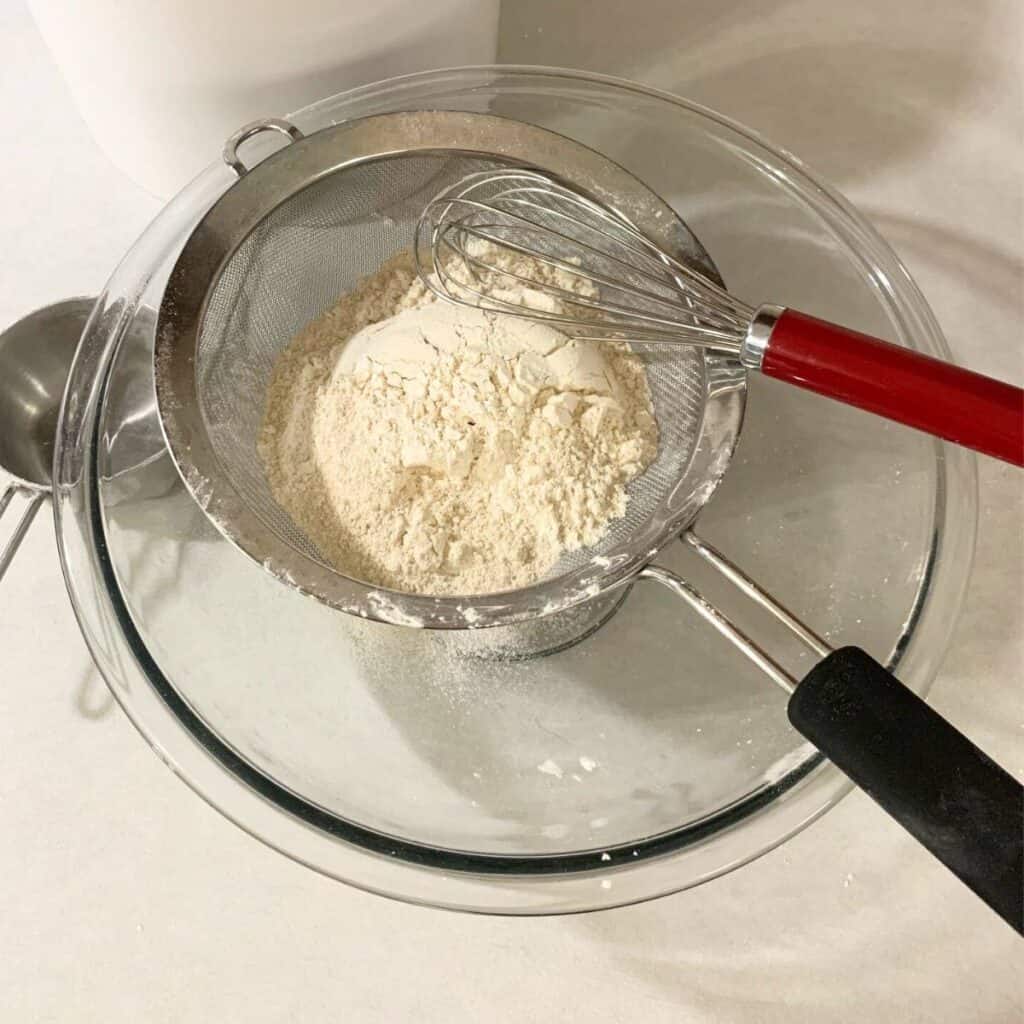
For just a few cups of sifted flour, I find that it’s helpful to use a large fine mesh sieve with a handle along with a stainless steel balloon wire whisk.
I’ll whisk the flour around and around so that the fine flour falls into a bowl placed underneath the sieve.
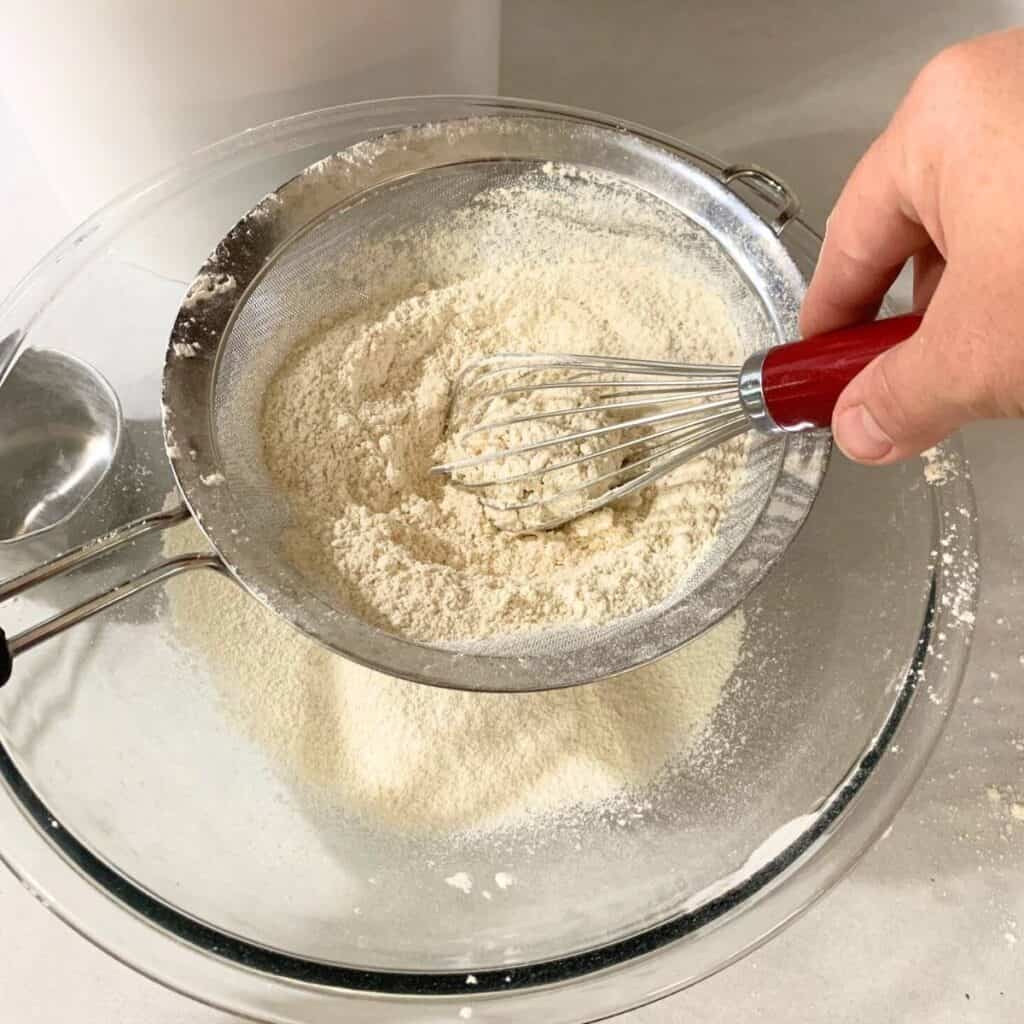
The larger bran and germ stay inside the sieve.
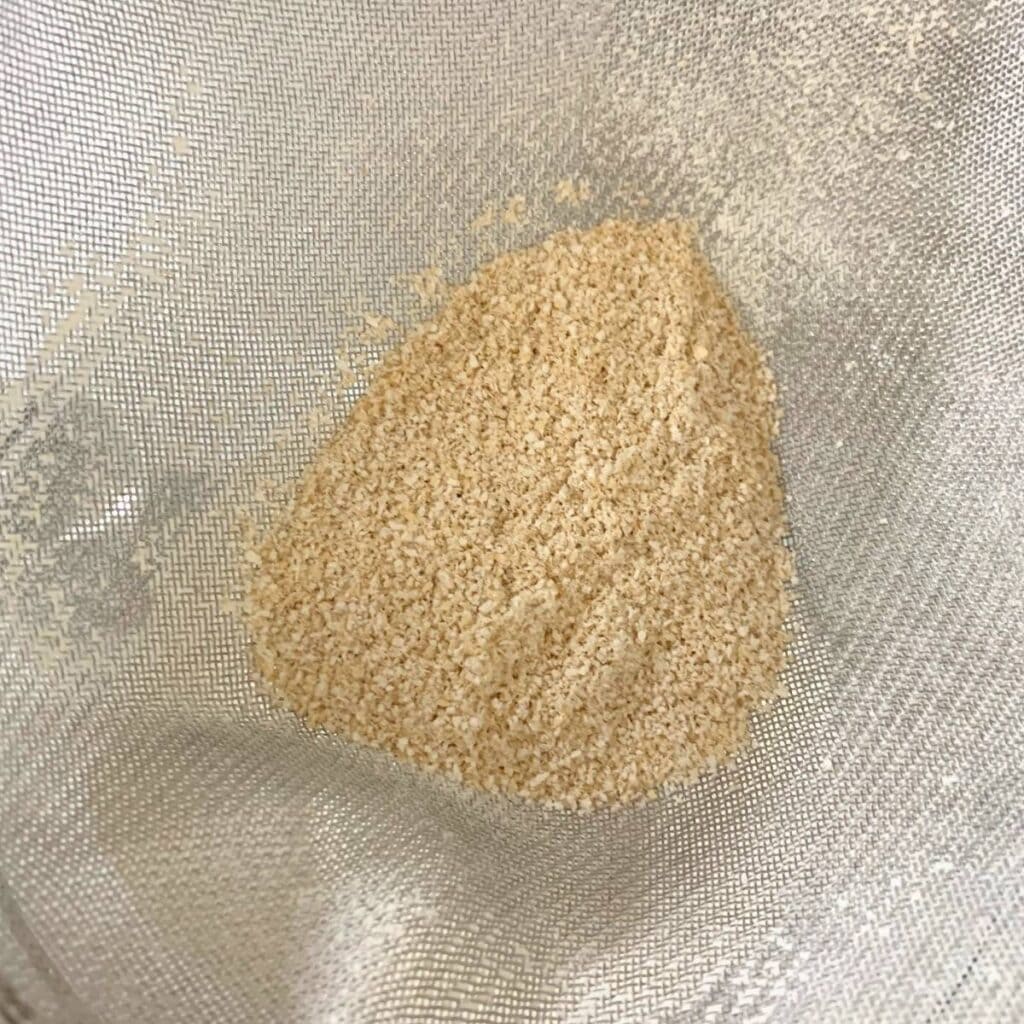
But the fine flour falls through to the bowl underneath the sieve!
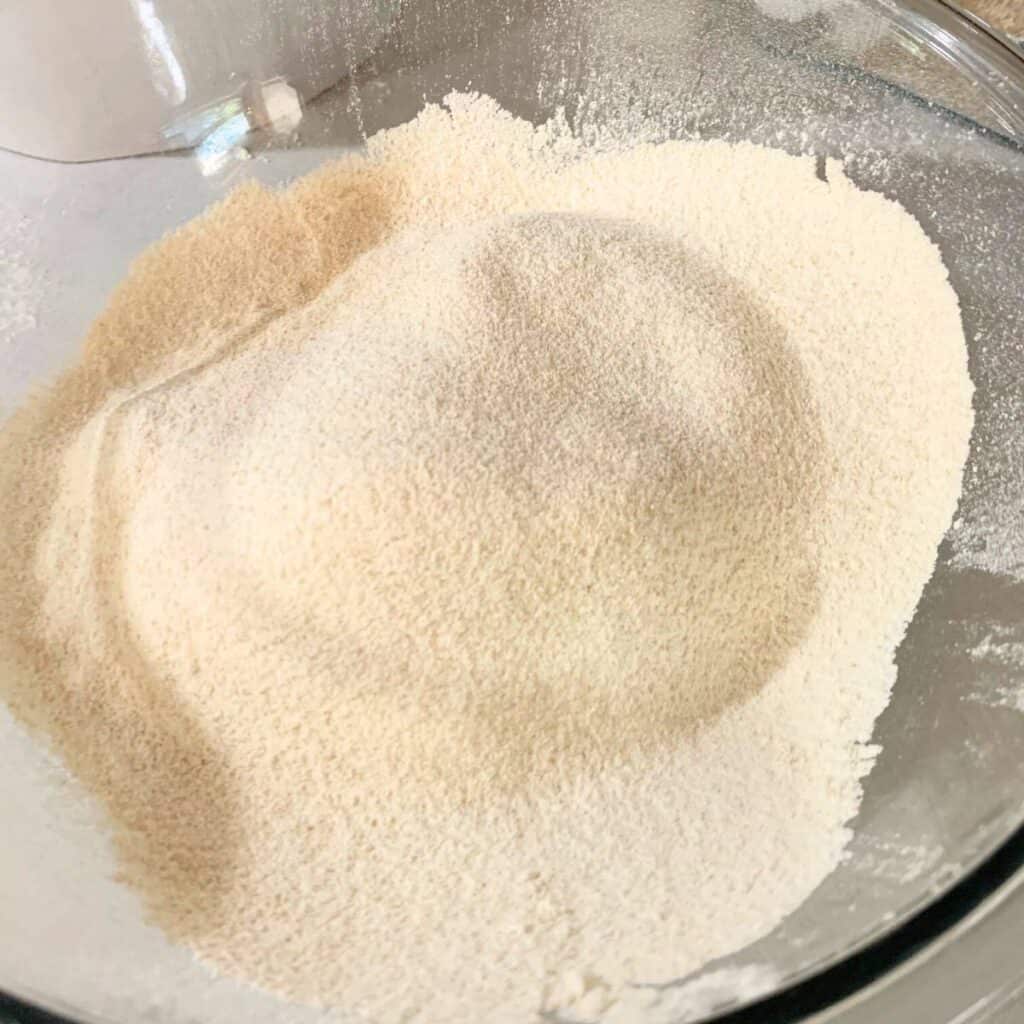
Even though this is an all purpose flour that you can use just as you would normally use all purpose flour, it’s not as ultra-fine as the powdery flour you get at a grocery store. That means there will still be a bit of a grittier texture for baked goods like pancakes and such. To fix that, just let the flour soak in the moisture of any liquids for 30 minutes or so.
I would also keep this flour in the freezer for long-term storage, or the refrigerator for short-term storage if you can’t use it up right away.
Helpful tips when using freshly milled flour.
If you’re using freshly milled flour for the first time, there will be a slight difference in recipes calling for flour. Depending on your kitchen and the type of flour you milled, you may need to use more or less flour than the recipe calls for. Alternatively, you may need to use more or less liquid.
When baking breads, try mixing half sifted flour or all purpose flour and half freshly milled whole grain flour without anything sifted out. It may take your family a few tries of eating whole grains before they’ll love the new flavor and texture.
Keep trying! Try mixing different flours and recipes and experiment a little bit. The results will still be delicious and nutritious!
Shop This Post
NutriMill Classic High Speed Grain Mill
Bosch Universal Plus Stand Mixer 800 watt 6.5-Quarts
hard red wheat berries, organic
hard white wheat berries, organic
soft white wheat berries, organic
Pin It For Later!
